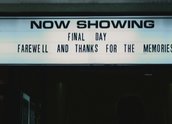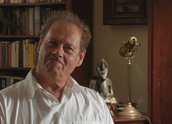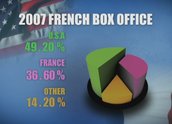


Into the Shadows (2009)
Synopsis
This independent documentary examines problems facing the Australian film industry in the fast-changing conditions of the early 21st century. At the point the film was made, independent cinemas were closing and Australian films routinely falling over at the local box office. Even the occasional successes were generally modest in scale compared to the big hits of the 1990s such as Strictly Ballroom (1992).
After setting the context with a potted history of Australian filmmaking and the struggles faced by filmmakers in earlier decades, the film examines the contemporary structure of film distribution and exhibition in Australia. Are filmmakers and funding bureaucrats producing too many films that audiences don’t want to see? Another problem is successful local filmmakers leaving Australia to work overseas. Into the Shadows concludes with two case studies of low-cost digital filmmaking:Kenny (2006) and The Jammed (2007).
Curator’s notes
Into the Shadows appeared at an unusually angst-ridden point for the local film industry. The film’s contribution to a national debate was not only timely but useful thanks to its ambitiously broad scope and clear and well-structured presentation of material, with graphics and animation used to illustrate key concepts.
If the film has a flaw, it’s the lack of discussion about the increasing role of home entertainment during the decade, from pay TV to the number of films playing via digital channels, to the popularity of computer-friendly viewing modes (from illegal downloads to iTunes and other services).
Nonetheless it features credible and stimulating views from a broad array of expert witnesses. Many of these are articulate, passionate and highly experienced industry figures, including key former or current independent cinema operators and distributors. Industry practitioners interviewed include Clayton Jacobson, Bruce Beresford, George Miller, Rolf de Heer, Robert Connolly, Scott Hicks, Anthony Buckley, Andrew Denton, Antony I Ginnane, Sue Maslin, Brendan Cowell and Glenys Rowe.
The film declines to align itself with one position or another, preferring to allow a variety of positions and arguments to emerge – some of them contradictory. If there is an overall conclusion, it is that local filmmakers and the film industry at all levels urgently need to reorient themselves to meet radically – and rapidly – changing conditions.
- Overview
- Curator’s notes
- Video 3 clips
- Principal credits
- Find a copy
- Make a comment
- Map
- Add your review



